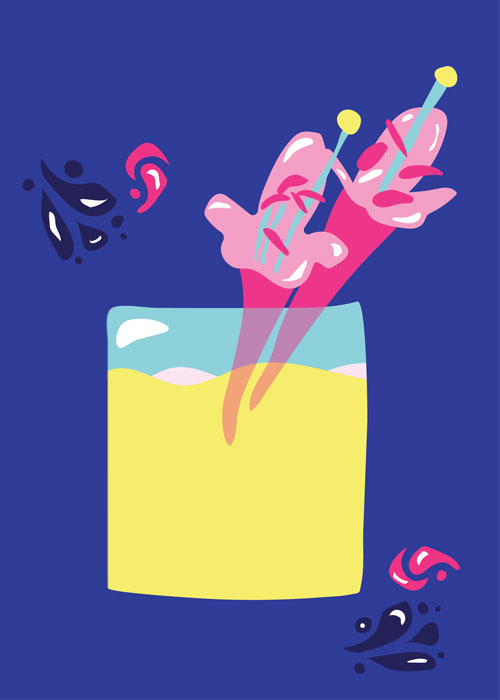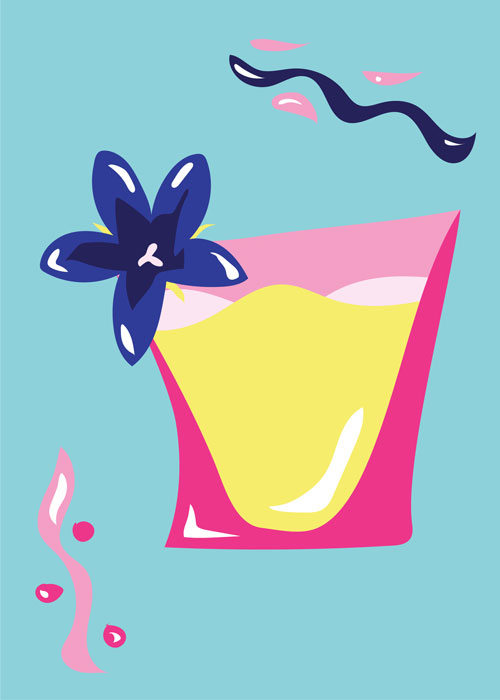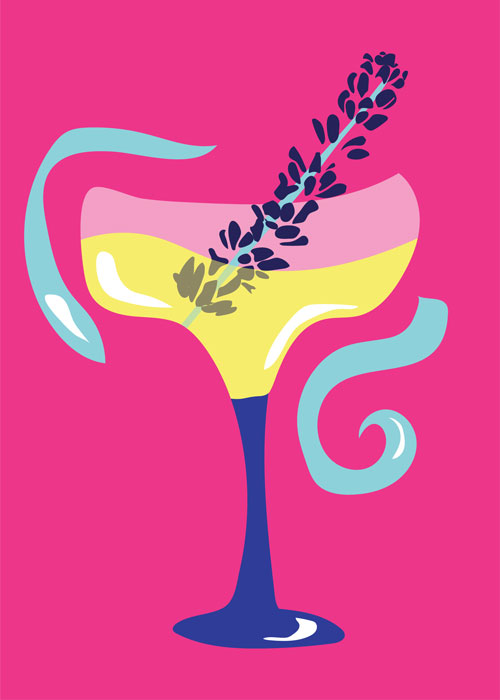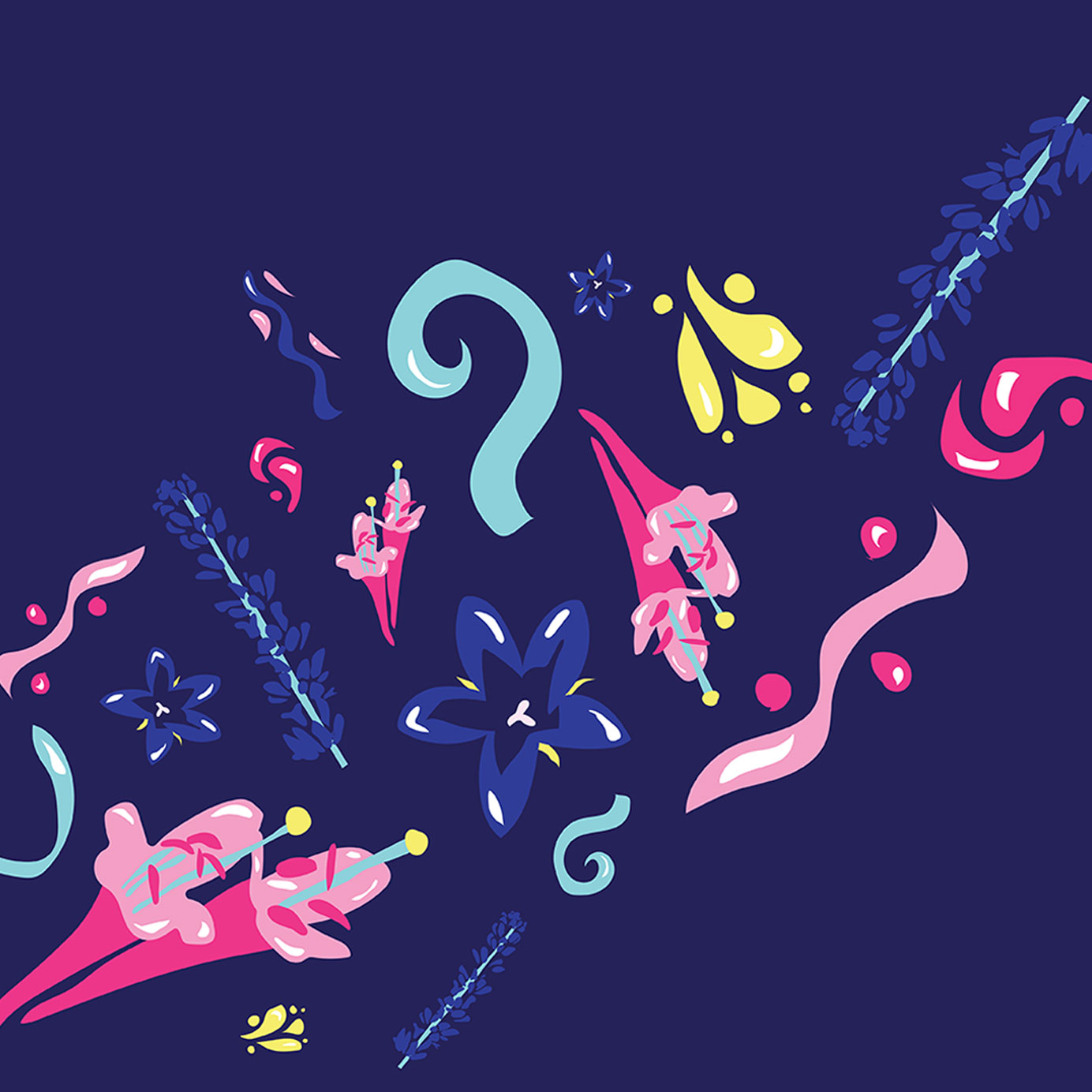If you have an Instagram account, you already know edible flowers are having a moment. Twee pansies float on top of every other coupe to add interest and color, especially during the spring and summer. But the most creative bartenders and herbalists know these beauties really bloom in the glass, not just on top of it.
Why Use Flowers in Cocktails?
“Well-chosen edible flowers bring a range of qualities to recipes. And they are perhaps the most eye-catching and evocative visual marker of a very particular microseason,” explained Marie Viljoen, forager, herbalist, and cookbook author. “The year is an unfolding calendar of flower flavors.” If you really want to “drink local,” just look around your neighborhood. Much of what you see there would actually make a great cocktail.
For Viljoen, flowers fall into four categories: appearance, taste, texture, and aroma. She tends to skip those that merely offer visual appeal — like those eponymous violets — and go for flowers that offer more bang for their buck.
What To Look For
When you get started using edible flowers on your own, make sure you buy pesticide-free. Your best bet is finding a food-focused purveyor to ensure you can eat what you buy. If you decide to forage instead, Viljoen said to follow your nose.
“I like to collect flowers in the morning or evening, when they seem most scented and fresh,” she advised. Viljoen also recommended collecting them in paper bags, since plastic will make them sweat and moisture can detract from scent preservation. Don’t forage where pesticides or chemicals may have been used, and watch out for pet potties, too. This handy list provides an easy reference for which flowers — and parts of plants — won’t make you sick.
Use your flowers as soon as possible. If you need the scent to stay, don’t go near the sink. But if you’re going for texture and flavor, feel free to wash your blooms. Flowers like nasturtium, hibiscus, violet, lavender, and even roses all work great in beverages.
Try Making Tinctures
Lauren Kowalski, who works in product development at Mile High Spirits in Denver, relies on botanical tinctures for her bar’s spring and summer flavors. There, she maintains a flavor library of over 50 single botanical infusions. “My bartenders and I use these to help inspire or decide what flavors we want to incorporate into a new drink,” she explained.
Single botanical tinctures give bartenders a wealth of control over the strength and character of flavor, Kowalski said. A few drops of rose tincture can add just a whisper of florals to a Gimlet, or a few more can really pack a punch.
“Having tinctures available is nice because they’re so easy and cheap to make, and take up such little space,” she explained. “It’s an efficient way for me to introduce more seasonal flavors.”
Have Fun Fermenting Them
Viljoen likes fermenting flowers, which allows wild yeast to transform and preserve scents for a funkier flavor. “I often start with what I call a cold extract syrup or cordial — something intense enough to require diluting, when serving,” she explained. “And without heat, I find perfume is preserved better.”
Fermenting florals doesn’t require quite the same scientific approach as, say, making beer or wine. “I tend to ferment by the seat of my pants, topping flowers with sugar and tap water, waiting for an active fizzing, and then winging it for a few days, stirring daily,” Viljoen explained. “When it tastes and smells fantastic, I will either strain and bottle (keeping it in the fridge), or strain and then go onto a vinegar-making stage.”
Vinegars or shrubs can add a pungent dimension to cocktails or taste great on their own with a little soda water. “Vinegars are tremendously versatile and often add life to low- or no-alcohol cocktails, and I cook with them a lot,” she explained.
Stir Your Garden Into a Simple Syrup
If you’d rather skip fermentation, make a simple syrup with your favorite blooms. Elderberry, rose, lavender, and chamomile are all common syrup flavors. You’ll want a large handful or two of blooms for every cup of water. Just cover your blooms with one part water and one part sugar. Let sit overnight, then strain into a bottle. Store it in the refrigerator to prevent mold.
You can also steep your floral syrups like tea before bottling, if you just can’t wait, but remember, heat can impact perfume.
Or Just Buy a Bottle
Amy Stewart, author of “The Drunken Botanist: The Plants that Create the World’s Great Drinks,” finds it easier just to head to the store. Because alcohol draws out whatever flavors it can get — both good or bad — she likes to leave infusing up to the experts. “Given the relative affordability of wonderful, high-end liqueurs, I’d rather leave it to the professionals and buy a bottle,” she said.
A wealth of floral-forward liqueurs have been on the market for awhile — here’s looking at you, St.-Germain — but relatively few base spirits make use of the blooms. At Lockhouse Distillery in Buffalo, N.Y., sakura gin uses local cherry blossoms for a uniquely floral Plymouth-style gin.
“As far as gins go, it’s very floral, to put that cherry blossom center stage,” explained operations manager Cory Muscato. “People make the mistake of thinking it’s going to be sweet, but you really get a lot of the juniper, citrus, and lemon peel as well.” Lockhouse uses coconut flakes to give the gin that viscosity to recall the softness of rose petals. They also lend the spirit a back-end sweetness to balance a pungent rose aroma.
“It’s very similar to a London dry [gin], with a little more weight, a little more spice,” Muscato explained. “After you try it on its own, it works really well in a Gimlet, a gin Cosmo, or even in a standard Negroni, since it really complements the vinosity of vermouth.”
Don’t Forget to Garnish
If you’re just dying to use your own garden in your glass but want to keep things simple, Stewart also has a cute garnish trick up her sleeve. She calls it a “citrus raft.”
“Make a very thin slice of lemon or lime, and cut a pansy so that a little bit of the stem is attached to the flower,” Stewart instructs. “Pull the stem through that little space in the center of the citrus slice and float that in a cocktail glass.” That’ll add visual interest to any floral cocktail.
When using flowers to garnish, treat them the same way you would any other ingredient. Make sure they’re food-quality and, of course, edible.
Do Try This at Home
To make a tincture, Kowalski uses dried flowers and neutral grain spirit, or vodka with at least a 65 percent ABV. In a Mason jar or other sealable container, combine a ratio of .5 ounce by weight of the dried flower of your choice with 6 ounces by weight of your neutral spirit. Store in a cool, dark place for at least 6-8 weeks. Strain and bottle when ready to use.
This recipe works well with lavender, rosebuds, elderflower, violet leaf, red raspberry leaf, jasmine, hibiscus, chamomile, and meadowsweet. Like other herbs, flowers lend themselves well to experimentation. Kowalski recommends pairing hibiscus with bourbon, lavender with gin, and chamomile with tequila, as a starting point.
Fermented Honeysuckle Cordial

From Viljoen’s “Forage, Harvest, Feast – A Wild-Inspired Cuisine”
Makes 5 cups (1¼ liters)
This fizzy drink tastes just like honeysuckle smells
- 3 cups (3 ounces/85 g) honeysuckle flowers
- 5 cups (1¼ liters) water
- 2 cups (400 g) sugar
Combine all the ingredients in a large, clean jar and stir until the sugar has dissolved. Cover the mouth with cheesecloth secured with string or a rubber band and stir daily. After several days, once fermentation is very active (lots of bubbles, flowers slowly rising out of the jar), push the flowers down and keep stirring. Give it an extra day, then strain through a fine-mesh sieve. Strain again through a double layer of cheesecloth. Pour into clean bottles and close.
Keep the bottles in the fridge, as some fermentation will continue. A bottle can explode if left out and warm.
The Aviation (a classic cocktail)
 From Stewart’s “The Drunken Botanist”
From Stewart’s “The Drunken Botanist”
- 1 1/2 ounces gin
- ½ ounce Luxardo maraschino liqueur
- ½ ounce crème de violette
- ½ ounce fresh lemon juice
- 1 violet blossom for garnish
Shake over ice and serve in a cocktail glass. Some versions of this recipe call for less crème de violette or less lemon juice; adjust the proportions however you like. If you don’t have a violet for a garnish, a pansy or Johnny jump-up would work nicely, too. Try this one with Stewart’s citrus raft garnish!
Lavender Bee Keeper (a twist on the Bee’s Knees)
 From Mile High Spirits
From Mile High Spirits
- 2 ounces London dry gin
- ¾ ounce lemon juice
- ½ ounce honey syrup (1:1 ratio of honey to water)
- 4-5 drops lavender tincture
Add all the ingredients into a shaker with ice and shake. Strain into a chilled cocktail glass. Garnish with a lavender sprig.
